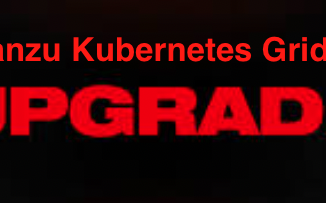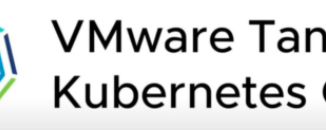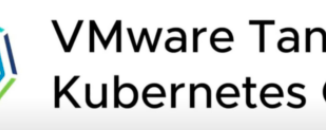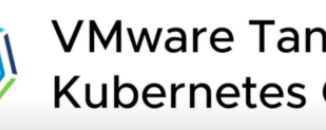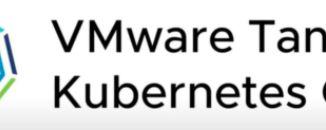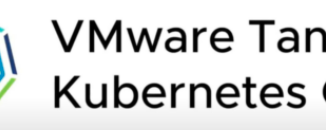Overview With Tanzu Kubernetes Grid, you can deploy Kubernetes clusters across software-defined datacenters (SDDC) and public cloud environments, including vSphere, Microsoft Azure, and Amazon EC2, providing organizations a consistent, upstream-compatible, regional Kubernetes substrate that is ready for end-user workloads and ecosystem integrations. In this post, I will explain the detailed steps to
TKG
TMC : Create vSphere with Tanzu clusters using Terraform
Overview Terraform provider with Tanzu Mission Control gives operations teams the ability to be infrastructure agnostic and build a code pipeline that accommodates a variety of infrastructure back ends. With Terraform, you can attach any conformant Kubernetes cluster to Tanzu Mission Control, therefore providing increased DevOps velocity by offering an additional
Tanzu Kubernetes Grid – Detach and delete clusters
Overview In my earlier post, I have shown the steps to attach/register TKG clusters using TMC CLI, now let me explain the process of detaching and deregistering the clusters using TMC Console. Detach the workload cluster from TMC Console In TMC Console: Clusters > select the cluster capv-workload > Actions (can be located in
TKG on Azure – Upgrade Management and workload clusters from 1.4.1 to 1.5.1
TKG 1.4 on AWS – Part 4 : Delete the clusters
Overview Deleting workload cluster takes off all namespaces and is non-reversible. Ensure to double check in case if you are doing it on production workloads. Depending on the cluster contents and cloud infrastructure, you may need to delete in-cluster volumes and services before you delete the cluster itself. Delete Workload cluster Before
TKG 1.4 on AWS – Part 3 : Create workload cluster
Overview In VMware Tanzu Kubernetes Grid, Tanzu Kubernetes clusters are the Kubernetes clusters in which your application workloads run. Tanzu Kubernetes Grid automatically deploys clusters to the platform on which you deployed the management cluster. For example, you cannot deploy clusters to Amazon EC2 or Azure from a management cluster that
TKG 1.4 on AWS – Part 2: Deploy management cluster
Overview A management cluster is the first Key component that you deploy when you create Tanzu Kubernetes Grid. The management cluster is a Kubernetes cluster that performs the role of the primary management and operational control plane for the Tanzu Kubernetes Grid. This is where Cluster API runs to create the Tanzu
TKG 1.4 on AWS – Part 1: Prepare the resources
Overview This post explains how to prepare Amazon EC2 environment for running Tanzu Kubernetes Grid. Before you can use the Tanzu CLI or installer interface to deploy a management cluster, you must prepare the bootstrap machine (can be your local workstation or any vm that has internet access) on which you
Tanzu Kubernetes Grid – Create workload cluster on vSphere
Hola, In this post I will be demonstrating how to use Tanzu Kubernetes Grid to deploy and manage Tanzu Kubernetes Workload clusters on a vSphere environment. TKG provides commands and options to perform life cycle management operations like Create, Delete, Scale up/down of kubernetes workload cluster. Prerequisite Before you create Tanzu
TKG 1.4 on Azure – Part 6 : Delete the clusters
This post covers the steps to delete the clusters that were deployed in TKG on Azure. Ensure to follow this doc only after double checking when NO APPLICATIONS ARE RUNNING. Cluster deletion completely wipes the pods running it. Delete workload cluster: Delete Management cluster: Management cluster deletion might usually take some time as
TKG 1.4 on Azure – Part 5 : Scaling operations
Scale management clusters: If you have deployed a development management cluster, like I did while creating i.e., with 1 control and worker nodes. You can scale the management clusters to production cluster type anytime using simple commands. In this post, I have covered manual scaling, but there is also auto scaling
TKG 1.4 on Azure – Part 4 : Deploy the application on workload cluster
TKG 1.4 on Azure – Part 3 : Create workload cluster
When you deploy Tanzu Kubernetes (workload) clusters to Microsoft Azure, you must specify options in the cluster configuration file to connect to your Azure account and identify the resources that the cluster will use. Create a yaml file with variables given in below template. for ex: wc-config.yaml Note: Below example is
TKG 1.4 on Azure – Part 2: Deploy management cluster
In this post, we will go through the steps to create management cluster through UI. Select Deploy under Microsoft Azure Fill in TENANT ID, CLIENT ID, CLIENT SECRET, SUBSCRIPTION ID that is collected in earlier post. Select the Region where you would like that management cluster to be deployed. Paste



